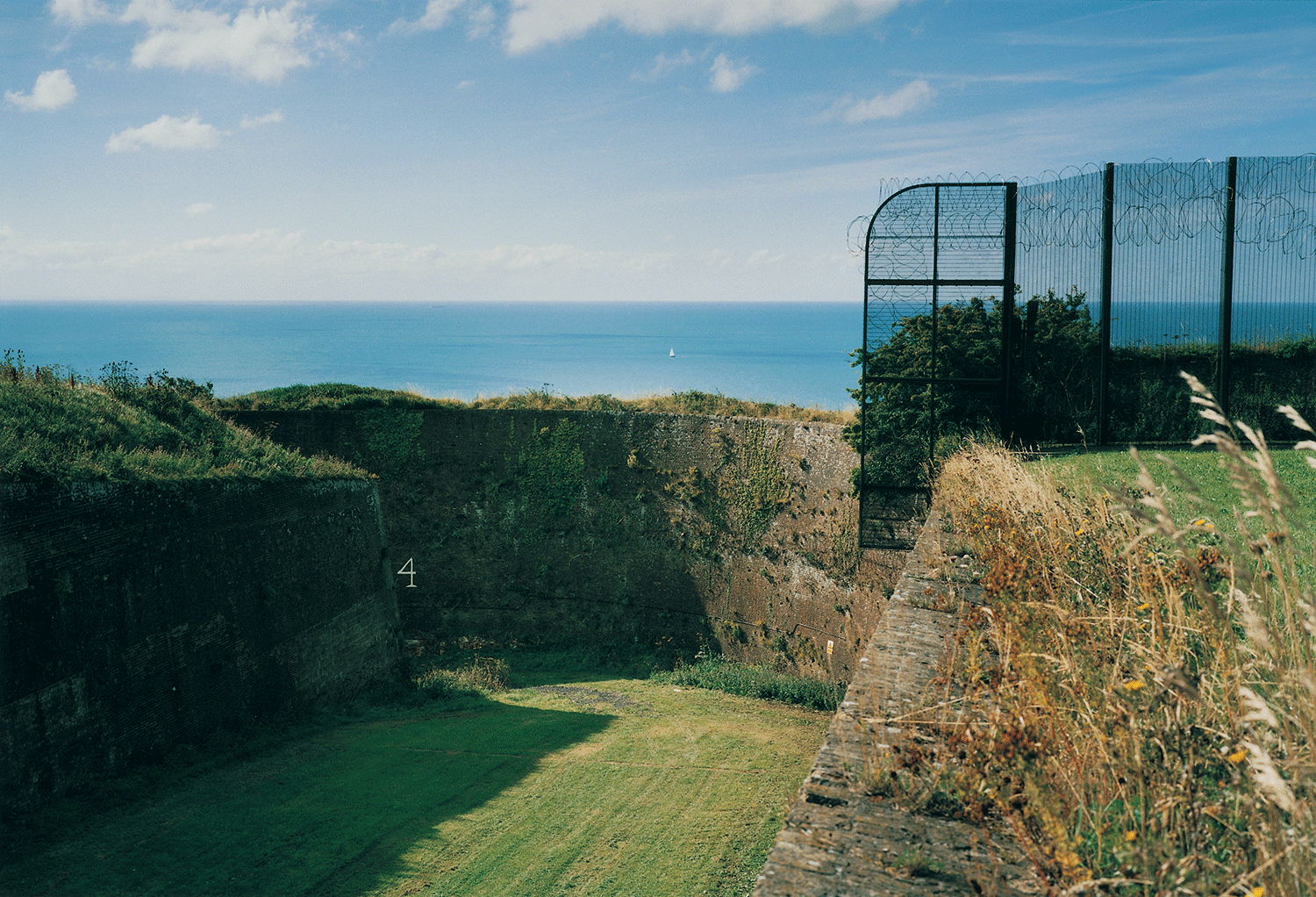
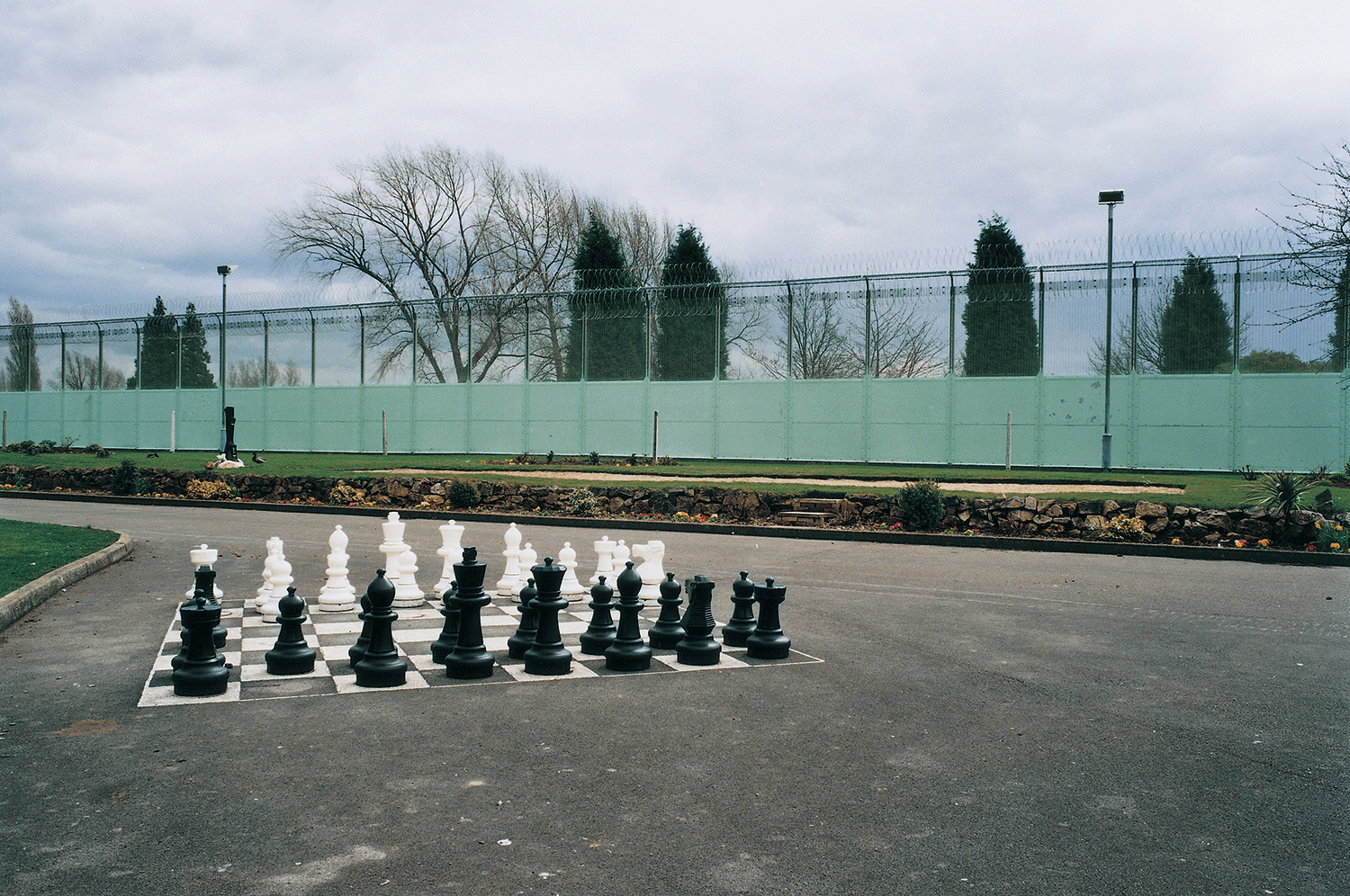

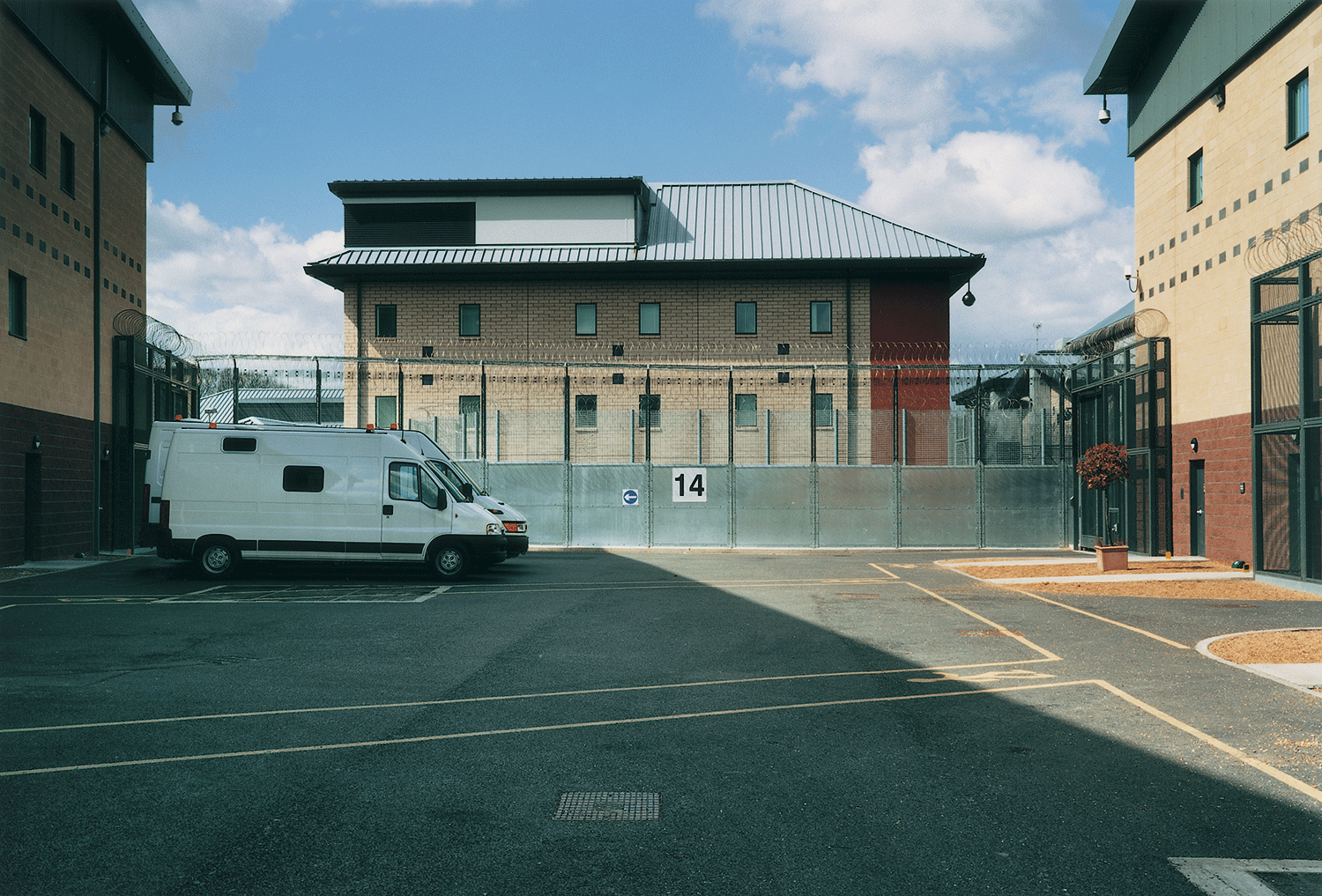
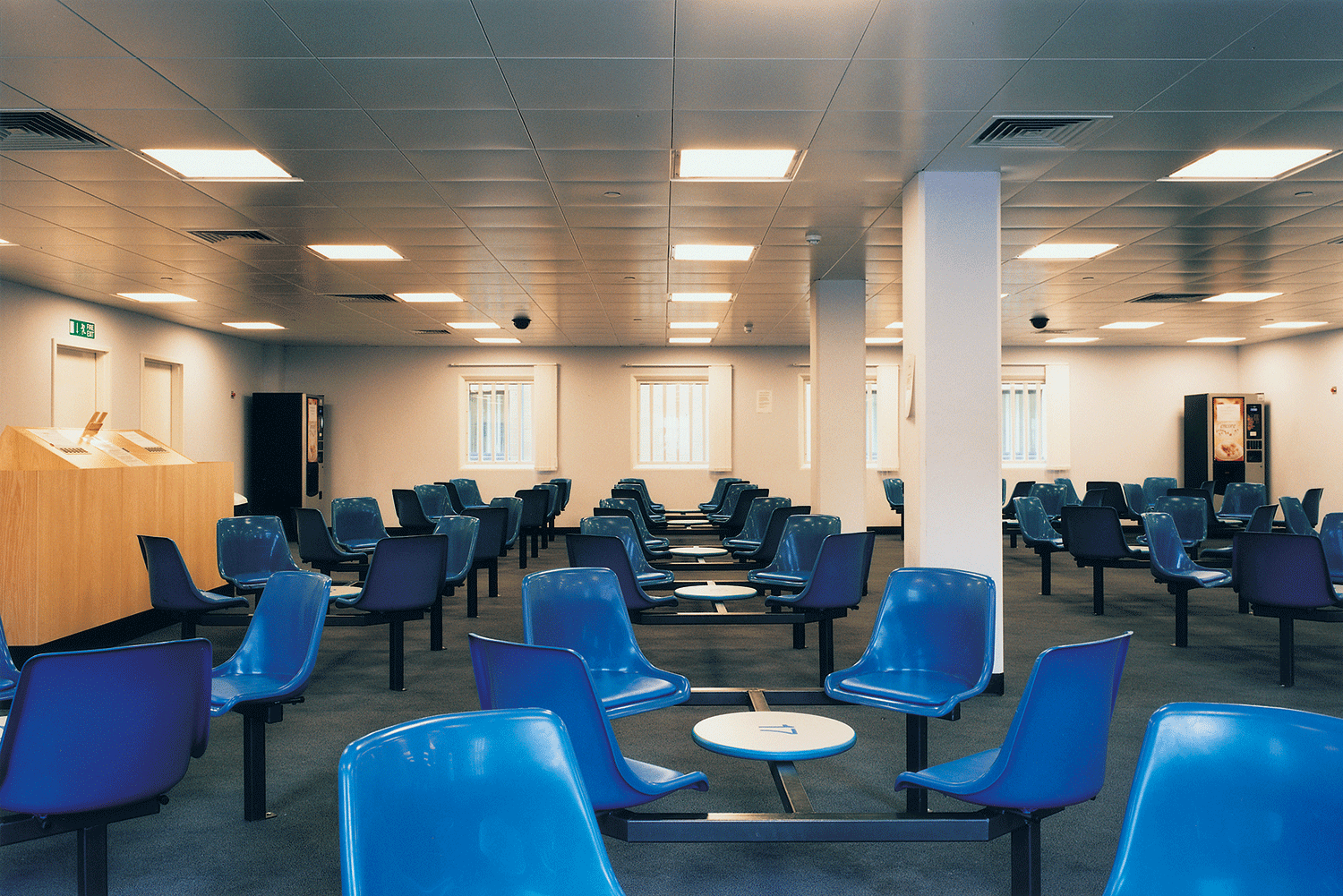
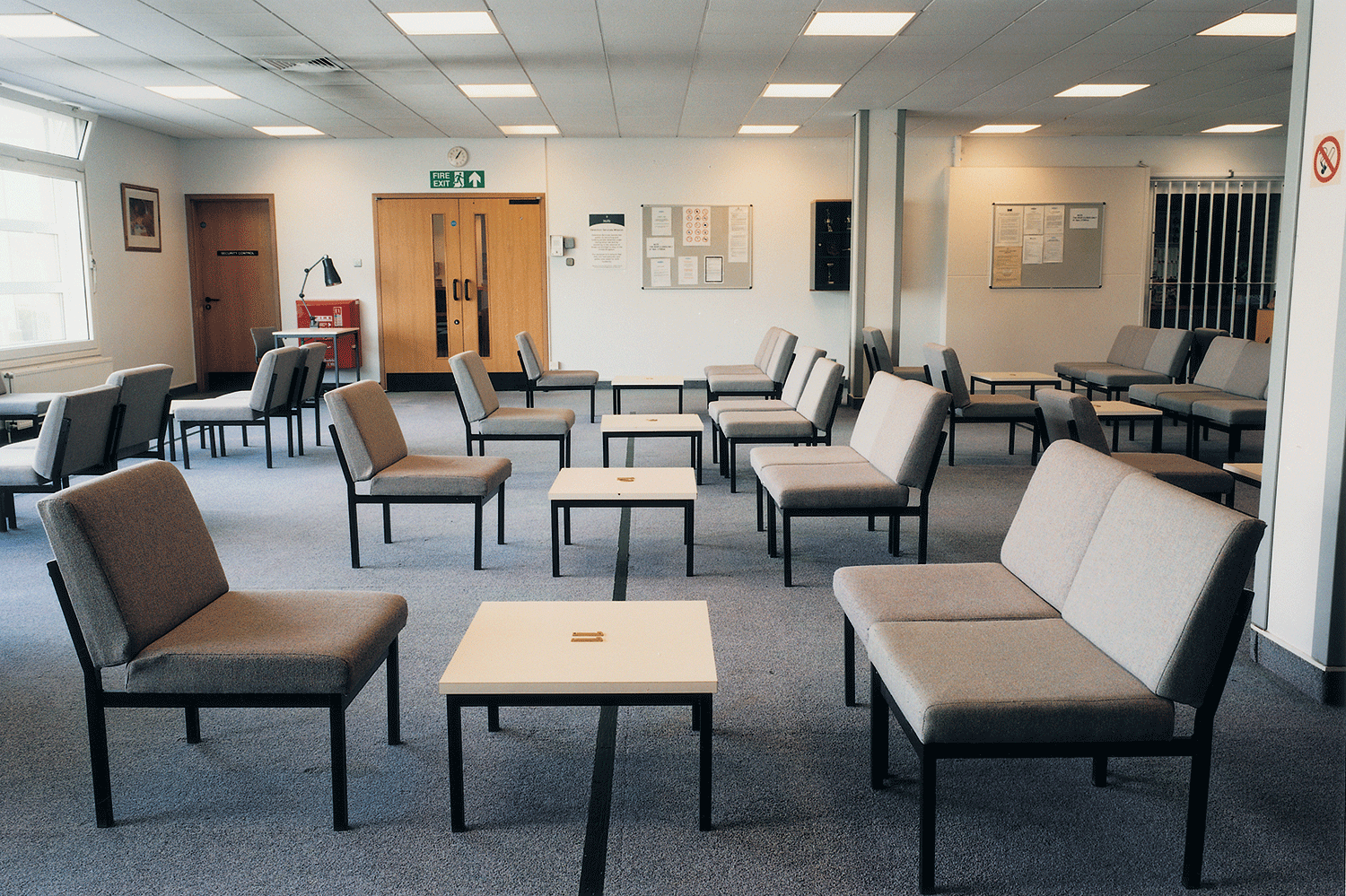
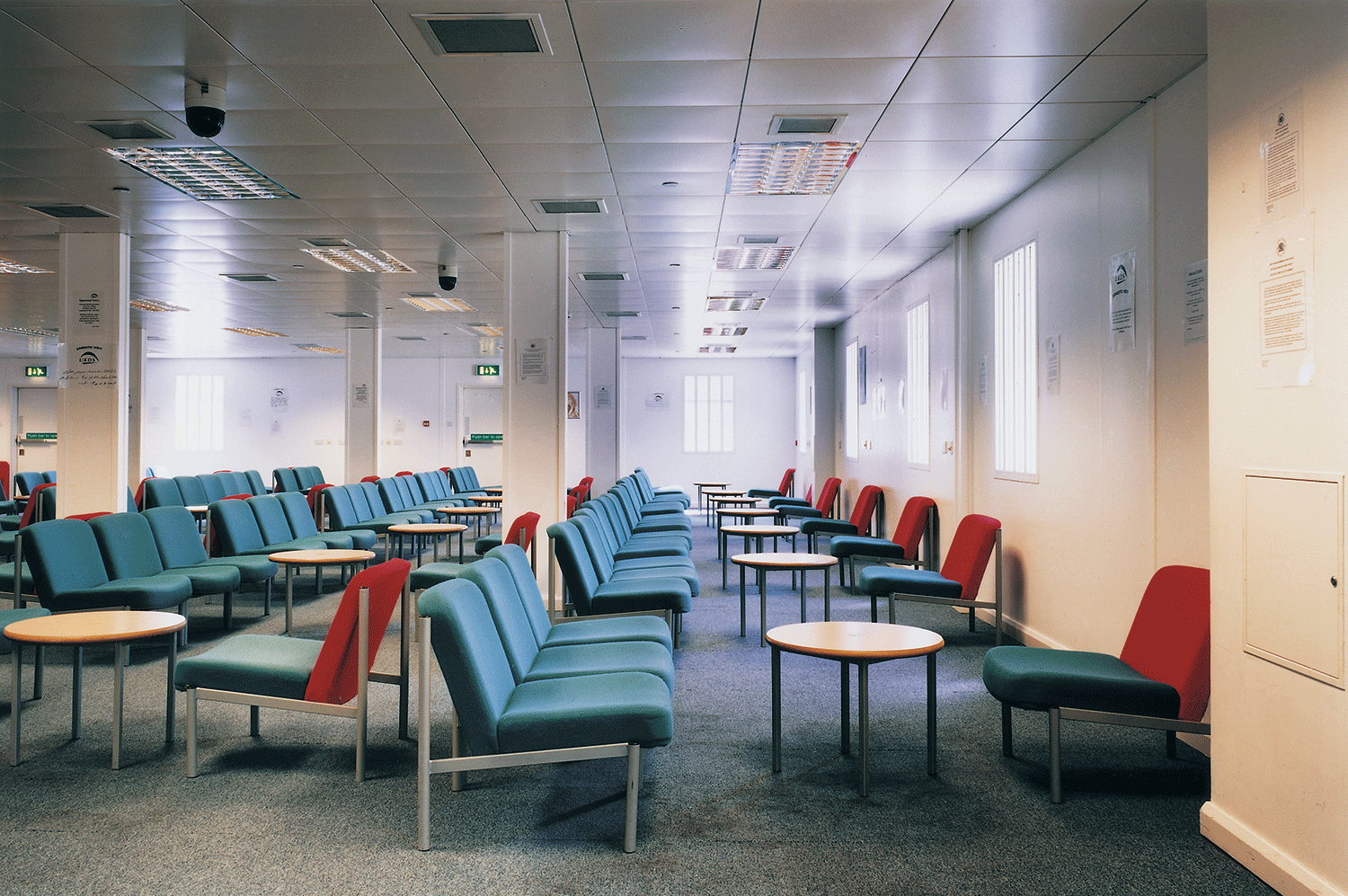

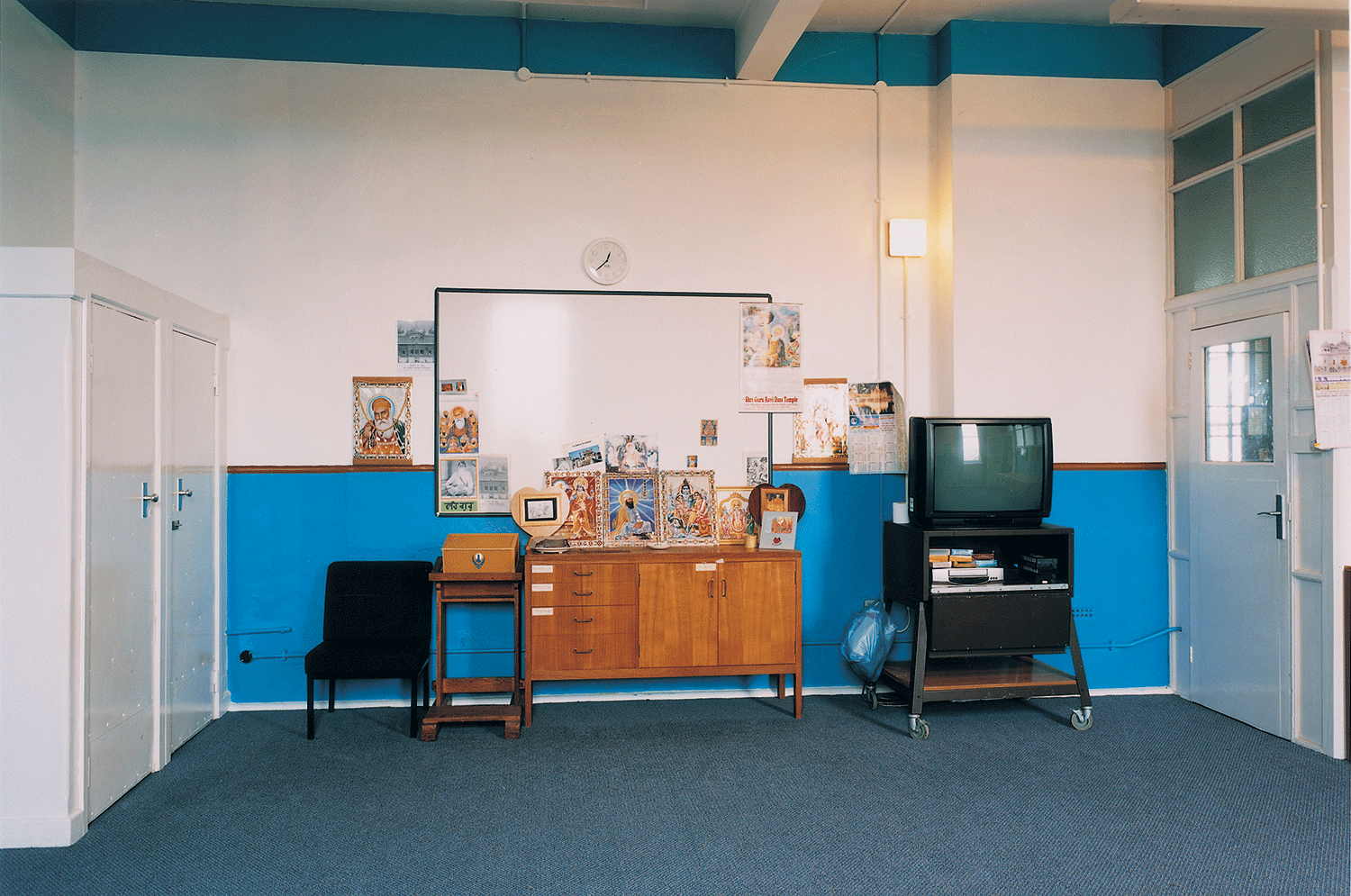
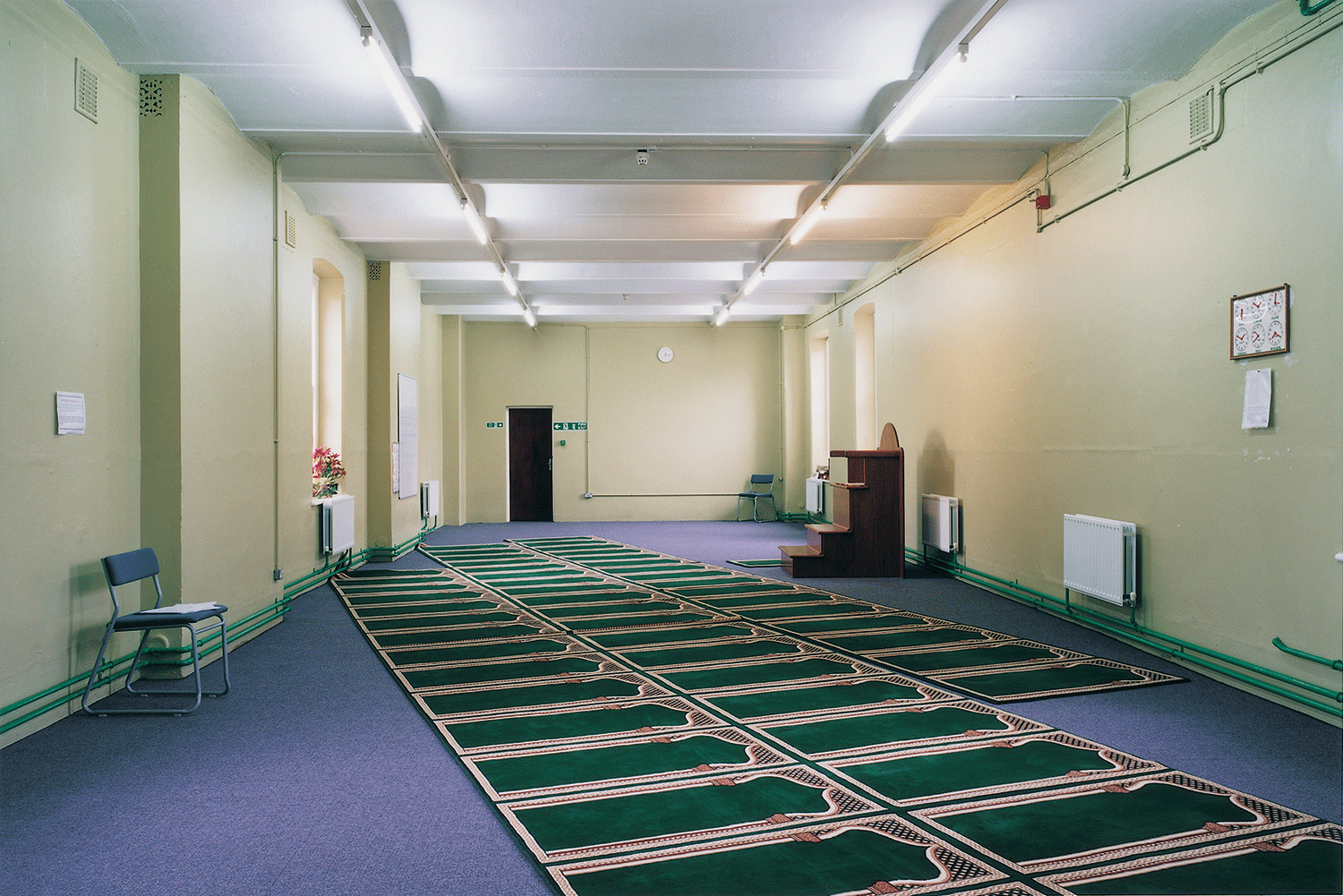
Above: Selected images from Border Country
The exhibition presents photographs of the orderly landscapes and institutional interiors (Visits Rooms) of the UK’s Immigration Removal Centres (IRCs) together with soundtracks of voice recordings conveying the complex identities of detainees and the physical, psychological and emotional aspects of life in detention. Border Country offers a rare insight into the experiences of immigration detainees, particularly through the use of the voice as an emotional force acting as a counterpoint to the formal images of the institutions. Dominant representations of asylum seekers and migrants focus on ‘our’ view of ‘them’ as ‘Other’. The interview extracts in Border Country’s soundtracks employ the asylum seekers’ and migrants’ perspectives as a mirror, reflecting both on the immigration system itself and on our own culture.
“Border Country is powerful art, and powerful observational journalism” R. M. Vaughan, Globe & Mail, Toronto
“Friend's photographs of immigration removal centres and her recorded interviews with detainees paint a haunting picture of the fear and uncertainty at the edges of a nation” Robert Clark, Exhibitionist: The week’s art shows in pictures, The Guardian, 16 Jan 2010.
For more press reviews, see the Reviews tab on the main menu above
The Border Country exhibition soundtrack:
“These individual first-person accounts haunt the photographs of deserted rooms with accents of painfully prolonged uncertainty”. Robert Clark, The Guardian, exhibition preview Sat 16 Jan 2010
Selected sound excerpts
Below are five interview excerpts from the 38 tracks on the CD which accompany the Border Country book. I have kept the individuals anonymous for this website, but a short biography of each individual (with first name) is included in the book.
The vast majority of asylum seekers at the time were male. My interviews were carried out in Dover Immigration Removal Centre (IRC), which held male detainees only, over a period of two to three years (2003-06). Later, in 2007, I obtained access to Yarl’s Wood IRC where I interviewed a several women detainees.
Sound excerpt no. 5 here is a recorded phone conversation, after the asylum seeker had experienced an ‘attempted deportation’ (by plane).
Project Background
I started researching Border Country early in 2003 and began visiting male detainees in Dover Immigration Removal Centre (IRC) that spring, while waiting for permission from the Home Office to bring in a tape recorder and camera. (Note: the vast majority of IRC detainees are male). That summer I was allowed to record interviews in the legal cubicles adjoining the visits room, and to take portraits of detainees in the visits room against a particular patch of wall (selected by the security officer for its lack of a view of exits or windows). I was not allowed to make general photographs of detainees in the visits room or to include members of staff in any part of the photograph.
I obtained access to detainees with the help of the Dover Detainee Visitor Group who made initial contact on my behalf. Interviews developed slowly to build up trust. Each detainee and I met on at least two or three occasions and discussed the implications of possible future exhibition/book/web coverage. I was upfront about the fact that this was a slow long term project – and that by the time the show was exhibited, the individual would have likely been either deported, ‘removed’ or released. Such a project therefore could not help publicize his individual case for asylum. Despite this, we built strong bonds, and I tried to help in other ways. I was moved by the fact that, while in a very vulnerable position, the detainees who put themselves forward for interview were eager to articulate their experiences and express their opinions for posterity.
However, several detainees at Dover did not wish to be photographed for fear of repercussions upon their asylum cases here in the UK, but also for fear of being identified in their home countries (via the circulation of web images or by the chance that the book might get into the ‘wrong hands’). Others enjoyed the experience of the photo sessions, and two wanted the prints sent to their families back in their home countries. When, in the spring of 2007, I eventually gained access to speak to women in Yarl’s Wood (four interviewees initially) all were too nervous to be photographed, having fled abusive marriages or other persecution in their home country.
In 2004 Isaac, whom I had previously met in Dover, had just been transferred to Tinsley House, Gatwick. When I first walked into the visits room at the start of visiting hours, it was empty, and I was immediately struck by the space and how it was organised. I was inspired to try and photograph both Tinsley House and other IRC visits rooms in the UK. Eventually permission came through.
I was not given access to the living quarters in any IRC. However, in 2005, I was permitted access to the Napoleonic moat fortifications surrounding the Dover IRC, which had fascinated me. And in 2006, I was allowed to photograph the spaces for religious worship (Christian chapel; Mosque; Multi-Faith room) and landscapes at Lindholme and Colnbrook.
During the editing process for Border Country I decided to leave out the few portraits I had made because portraits, particularly of such vulnerable individuals as asylum seekers, risk objectification and stereotyping. And more than half of the detainees did not wish to be photographed. I felt that the project would be more focused, more coherent and more challenging without the visual identification of the speakers on the soundtrack. And I felt that the detainee had more agency through their voice.
The book: I have written more about the project in the publication Border Country, which includes 19 images, essays by Mark Durden and Alex Hall and the complete exhibition soundtrack on an audio CD. Although Border Country is sold out, I still have a few imperfect copies (from an early print run) of the book available, including the 75 min. CD. (Please email me if interested: melaniefriendstudio@icloud.com).
Article about the making of Border Country: I have also published an article about the making of Border Country called “Representing Immigration Detainees: The Juxtaposition of Image and Sound in Border Country” in the online sociological journal Forum Qualitative Sozialforschung (its Thematic issue called “Visualizing Migration and Social Division: Insights from Social Sciences and the Visual Arts”).
Here is the link: Representing Immigration Detainees
Acknowledgements
Warm thanks to all the participants in this project. I will not forget their generosity of spirit, their resilience, their intelligence and wit. Their voices live on in the audio CD accompanying the publication, and in the exhibition itself.
Thanks to the Home Office (Border and Immigration Agency) and all the Immigration Removal Centre (IRC) managers in England, particularly the governor and staff of Dover IRC. I'm indebted to Vebi Kosumi of the Dover Detainee Visitor Group, Heather Jones of Yarl's Wood Befrienders and BID (Bail for Immigration Detainees).
Many thanks to the curators: Karen Downey of Belfast Exposed Photography, John Gillett of the Winchester Gallery, Anne Williams of the University of the Arts London, Eva Munoz-Marti and Dawn Giles of BCA Gallery, Katy McCormick, for the Gallery 44 show, Toronto, Claudio Hils for the European Central Bank Award 2008 finalists show, and the curators of the Systems of Systems exhibition in Athens (Rebecca Glyn-Blanco, Maria McClintock and Danae lo). See exhibitions tab in top menu for dates of shows…
Thanks to Caleb Knightley for sound design, Gordon MacDonald of Photoworks, Anne McNeill of Impressions Gallery, Susie Medley of Fotonet and Helen Sloan of SCAN for their support. Among many who have helped me during the making of Border Country I am particularly grateful to Frédérique Delacoste, Anthony Haughey, Crispin Hughes, Anthony Lam and Annie Mitchell.
Border Country is supported by the Arts and Humanities Research Council (AHRC), the Research Fund of the School of Humanities at the University of Sussex, the Arts Council of Northern Ireland (ACNI), Arts Council England (ACE), Belfast Exposed Photography, Fotonet, the University of Southampton, SCAN Media Arts Agency, the London College of Communication (University of the Arts London), Spectrum Photographic and Metro Imaging.